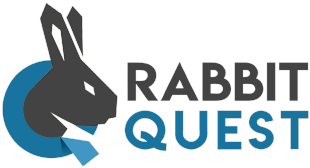What I learned from getting my motorcycle license about workplace vitality!
Last year I (Gijs Limborgh, Co-Founder of NewU) took up the challenge to get my motorcycle license. During my lessons, something surprising happened… I saw all kinds of similarities between what I was learning and what I was practicing at NewU. So to save you all the hours of lessons and the slippy practices ;) Here are 8 things I learned from getting my motorcycle license!
Time to read: 5 minutes
1. The Power of directional focus
Every seasoned motorcyclist knows that you gravitate towards where you place your focus. If you concentrate on a pothole, chances are you will drive straight into it. But if you focus on the open lane, you will effortlessly glide through. Similarly, when organizations fixate on sick leave, they may inadvertently stumble into a culture that's reactive, merely patching up health issues as they arise. On the other hand, a proactive focus on vitality and most importantly on the impact we try to achieve with our plans ensures a smoother, more vibrant journey for everyone involved.
Tip: Begin by envisioning what a health-centric organization looks like. Is it one where employees actively participate in wellness challenges? Where are walking breaks as routine as coffee breaks? Chart out this vision clearly, and then steer your organization in that direction.
2. Embracing the journey, not just the pit stops
A motorcyclist revels in the journey the beautiful road and the nice corners, not just the destinations or the pit stops. Similarly, HR should cultivate a continuous culture of health and wellness rather than only addressing health when it becomes a problem.
Tip: Integrate health into daily workflows. Instead of annual health workshops, consider shorter, more frequent wellness activities. From 'Mindful Mondays' to 'Fitness Fridays', turn well-being into an enjoyable, ongoing journey.
3. Equipping for the ride
A motorcyclist wouldn't venture out without their helmet, gloves, and protective gear. Likewise, instead of waiting for health issues to arise and then seeking remedies, equip your employees with the tools and knowledge they need to maintain their health. But most importantly also the tools for when things go wrong. You don’t wear a helmet because you should. You wear it because if something goes wrong you’re well prepared. The same goes for health initiatives. We’re working with people, and as far as my experience goes, people are not robots. So prepare that some items might not go as smoothly. Some employees might forget their habits. Don’t worry about it! Make sure that your preparation gets them back on track as soon as possible.
Tip: Offer resources such as health literature, extra information on nutrition and well-being, and access to health apps or platforms. Equip them for the long haul.
4. The group ride philosophy
Motorcyclists often ride in groups, looking out for one another. They understand the value of community. Similarly, the vitality approach isn’t just an individual's journey; it's a collective endeavor.
Tip: Create wellness groups or committees in your organization, promoting peer support and group activities. Whether it's group yoga sessions or team-building hikes, harness the power of community for collective well-being. Curious about a way to spot these wellness warriors? Check this blog.
5. Regular maintenance for smooth sailing
Just as a motorcyclist ensures their bike is in tip-top condition through regular check-ups, HR should prioritize ongoing evaluations and adjustments to the vitality plan.
Tip: Conduct bi-annual health and wellness surveys. Use the insights to refine and evolve your vitality initiatives, ensuring they resonate and remain effective for your workforce.
6. Navigating through storms with finesse
On the road, a biker might encounter unexpected storms. Instead of being deterred, they adjust their ride, trusting their skills and their machine. Similarly, even with a vitality plan in place, challenges will arise. It's the resilience and adaptability of the plan that counts.
Tip: Offer stress-management techniques. Equip your employees with the tools to navigate through the metaphorical "storms" of workplace challenges but also through the rainy days of habit formation.
7. Travel light, go far
Motorcyclists know the value of carrying only what's essential, allowing them to travel faster and more efficiently. In the context of workplace health, it means eliminating redundant or ineffective health practices and focusing on what truly benefits the employees.
Tip: Regularly review and prune outdated health policies or programs. Embrace innovative and efficient solutions that align with the current needs and dynamics of the workforce.
8. Enjoy the scenery
While the destination is crucial, bikers often relish the journey itself — the changing landscapes, the scenic routes. Similarly, while long-term employee health is the goal, it's essential to celebrate the small milestones along the way.
Tip: Recognize and reward health and wellness achievements, whether it's an employee reaching a fitness goal or a department successfully implementing a monthly meditation practice. Celebrate the journey towards holistic well-being.
Cruising into a future of vitality: Just as the motorcyclist thrives on the open road, looking ahead with anticipation and purpose, it's time for organizations to throttle up and cruise into a future that prioritizes vitality. The road to well-being, like motorcycling, is all about the choices we make, the focus we maintain, and the paths we decide to tread. So, gear up, and lead your organization on this exhilarating ride towards a more vibrant, health-centric future.
The open road of vitality awaits!




